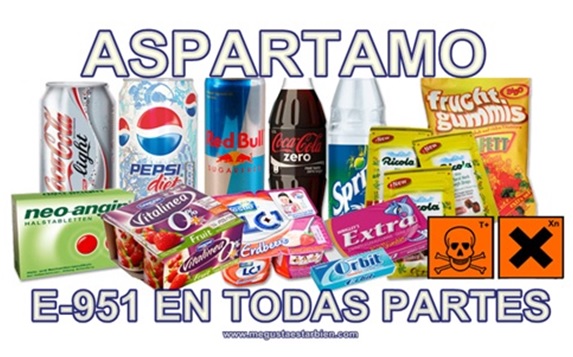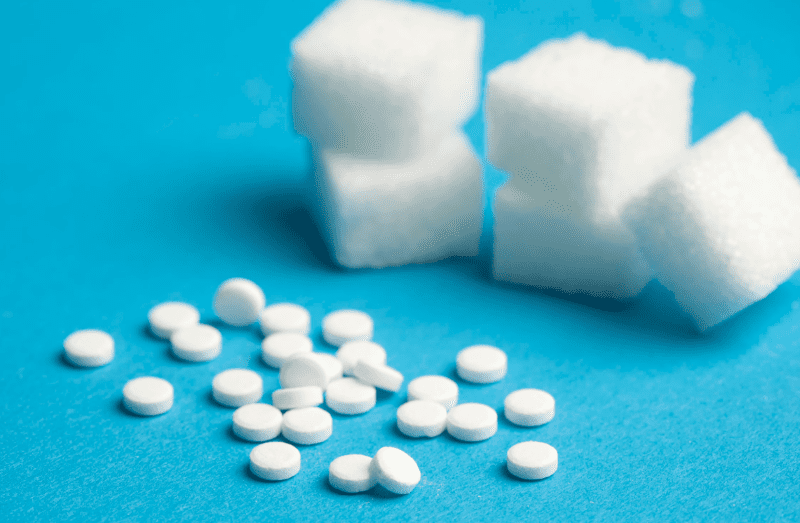The sweeteners, That is, sugar substitutes also have their history. Since they were promoted as a harmless option until today, when they were linked to cancer, obesity and cholesterol (among other evils), a lot of water has flown under the bridge.

Sweeteners: Triumphal entry of saccharin
In 1879, the first artificial sweetener, saccharin, was discovered by pure serendipity by Russian chemist Constantin Fahlberg. While he was eating, he made an astonishing discovery. The bagel he had just bitten had an incredibly sweet crust.
When he realized the taste was on his fingers, he returned to the laboratory and began “testing” various experiments he had in hand. He ultimately proved that sweetness is the result of an accidental chemical reaction. When working with coal tar, the o-sulfobenzoic acid in a glass had reacted with phosphorus chloride and ammonia to form benzoic sulfoxide.


That’s one version of the story. The other story is that it was actually Fahlberg’s boss, Dr. Ira Remsen, who didn’t wash his hands before eating. Be that as it may, it was the Russian who realized the commercial viability of saccharin.
It was considered the best substitute for sugar because it had low production costs, had no calories and did not cause tooth decay. The next step was to patent it and saccharin was immediately sold in powder form and pills.
Sweeteners: the first “scare” of saccharin
At the turn of the 20th century, in 1908, food horror stories, such as those told in Upton Sinclair’s novel “The Jungle” (which tells of the terrible sanitary conditions in the meat industry), began to frighten the American public. Sweeteners: brief history of sugar substitutes.
In response to this growing alarm, the United States Congress passed the Food and Drug Act in June 1906, to protect the public from “adulterated or misbranded or poisonous or injurious foodstuffs, drugs, or drugs.” It didn’t take long before saccharin found itself in the crosshairs of said law.
President Theodore Roosevelt used it to lose weight, so he ignored the complaints. But those behind the saccharin ban were undeterred and eventually had it removed from processed foods, but it was still sold to consumers.
The widespread sugar shortage during the two world wars caused saccharin consumption to skyrocket and this product was also installed almost everywhere in the world.
Sweeteners: the arrival of cyclamate
In 1937, Michael Sveda, a chemistry student at the University of Illinois, was working with a substance called cyclamate when he discovered that his cigarettes tasted sweet. Cyclamate was introduced to the US market in 1950 by Abbott Laboratories and was initially marketed for insulin control in diabetics and in 1958 the FDA deemed it safe.
But actually the best thing about cyclamate was that it removed the bitter or metallic aftertaste of saccharin. That is why the mixture of both (10 parts cyclamate + 1 part saccharin) was marketed with great success. And eventually it became the sweetener of choice by those producing soft drinks, food and sweets, replacing sugar. Sweeteners: brief history of sugar substitutes.
Sweeteners: the infamous aspartame
In 1965, chemist James M. Schlatter was looking for an anti-ulcer drug when he came across the sweet taste of aspartame by licking his finger. This came from the mixture of aspartic acid and phenylalanine, two naturally occurring amino acids. Aspartame came onto the market sweeteners artificially in 1973.
Unlike the other two compounds that are not metabolized by the body (they are excreted as soon as they are ingested), aspartame (or E 951 in Europe) is metabolized. And it has a minimal amount of calories (about 4 per gram), as well as a handful of contraindications. They cannot be taken by people suffering from severe liver problems and pregnant women with high levels of phenylalanine in the blood.

The latest generation of sweeteners
In 1967, acesulfame potassium, also known as Ace-K, was discovered by Karl Clauss and Harald Jensen in Frankfurt, Germany. They managed to do this when they combined fluorosulfonyl isocyanate and 2-butene and found that the result was extremely sweet.
In 1976, scientists at Queen Elizabeth College in the city of London were working with a chlorinated sugar compound, when one of the researchers thought about trying it. This is how sucralose was created, which is up to 600 times sweeter than sugar.
Fast forward to 2002. Unlike its predecessors, Neotame was planned as scientists around the world competed to find the world’s next big thing. sweeteners. They needed it to have no bitter aftertaste and a higher sweetness factor, in an attempt to enter the artificial sweetener market that moves billions of euros every year.
Neotame, developed by Monsanto, is 7,000 to 13,000 times sweeter than sugar and has a ‘long-lasting effect’. Neotame is very often used in combination with others sweeteners artificial.

